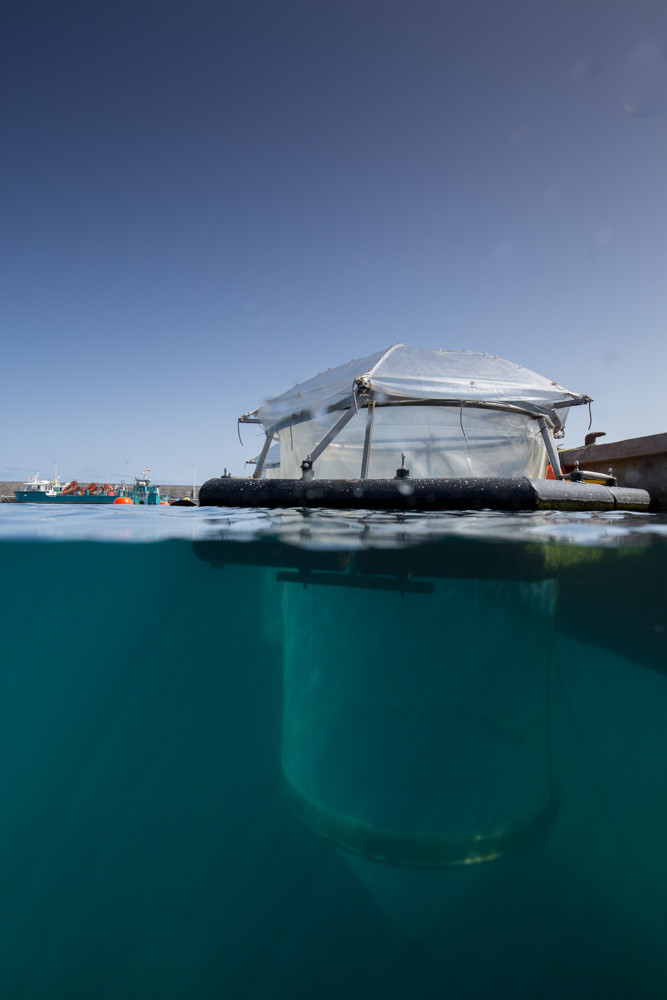A KOSMOS study is not meaningful without brain-racking scientists, and not feasible without focused and skilled technicians, but some work can only be done by brave scientific divers.
Okay, it’s not super brave to jump into 24°C crystal-clear water surrounded by a bouquet of colorful fish, crabs and nudibranchs – but it´s still hard work and every now and then leads to shock followed by excitement, when the 1-m-sting-ray “Jochen” or even the 2-m-sting-ray “Hans” pass by to check what we are doing.
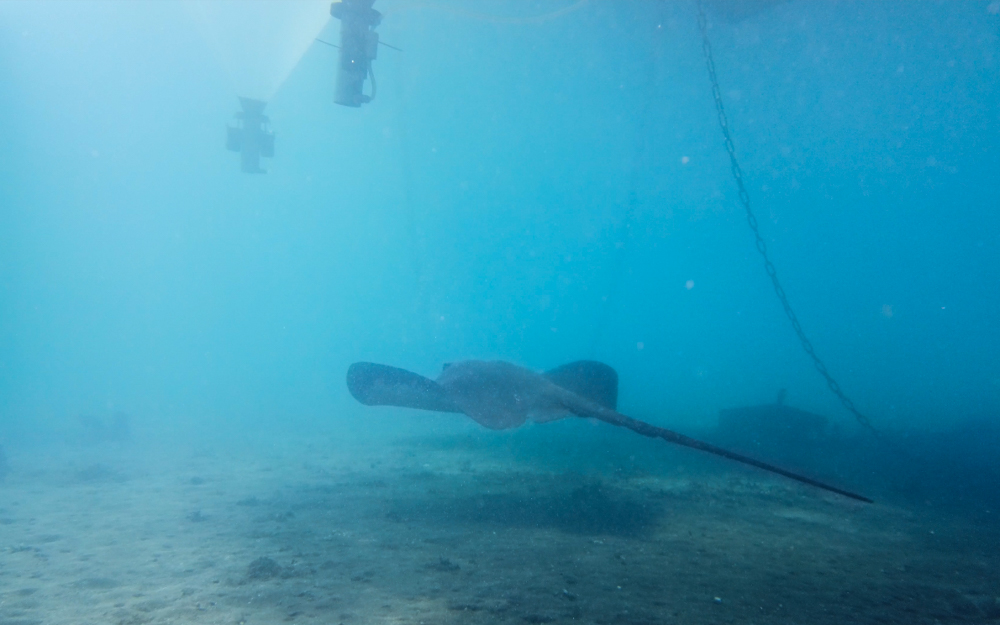
But, let’s start from the beginning, why do we actually need divers at the mesocosms, if sampling is done easily from above?
Most of the work under water happens before most scientists arrived and before the experiment has even started.
Our first dives are for screening and cleaning the bottom of the harbor from objects that may be dangerous for the mesocosm bags, such as sharp metal sticks and concrete blocks. At the same time, it´s also a good way to become familiar with the surrounding and the diving equipment, as some of the divers are new to our group.
The next dives may be themed “heavy metal”. Packs of 500 kg train-wheels need to be moved to the desired position where they transform into moorings for the mesocosms.
Okay, the really heavy lifting on land was done by a crane beforehand. And in the water, air-filled balloons lift the weights – but that doesn’t sound as cool and you still need someone to fill the balloons!
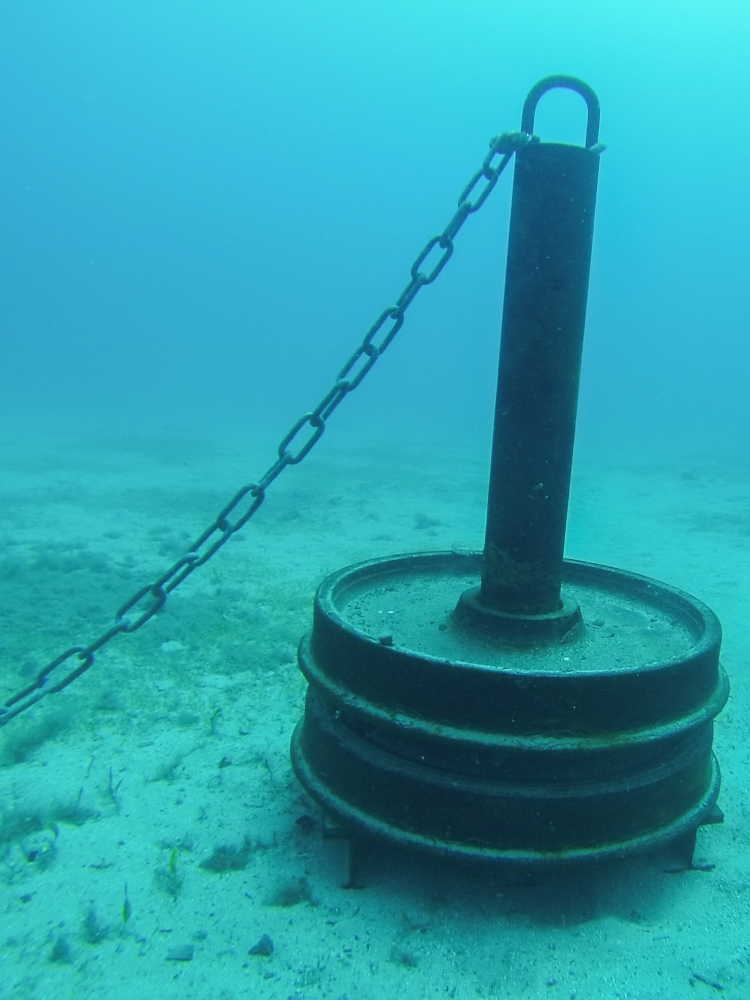
Then, chains and ropes are attached to the moorings and the mesocosm frames with shekels and splints – finally hard work for the divers, which makes you feel like a combination of Tim Taylor and Aquaman.
The finely tuned system of chains, ropes, weights, counterweights and rolls keep the mesocosms tightly anchored and at the same time, allowing for rising and falling water levels due to the 2 m tidal range!
Of course, all of this needs to be taken out of the water again, when the study is finished.
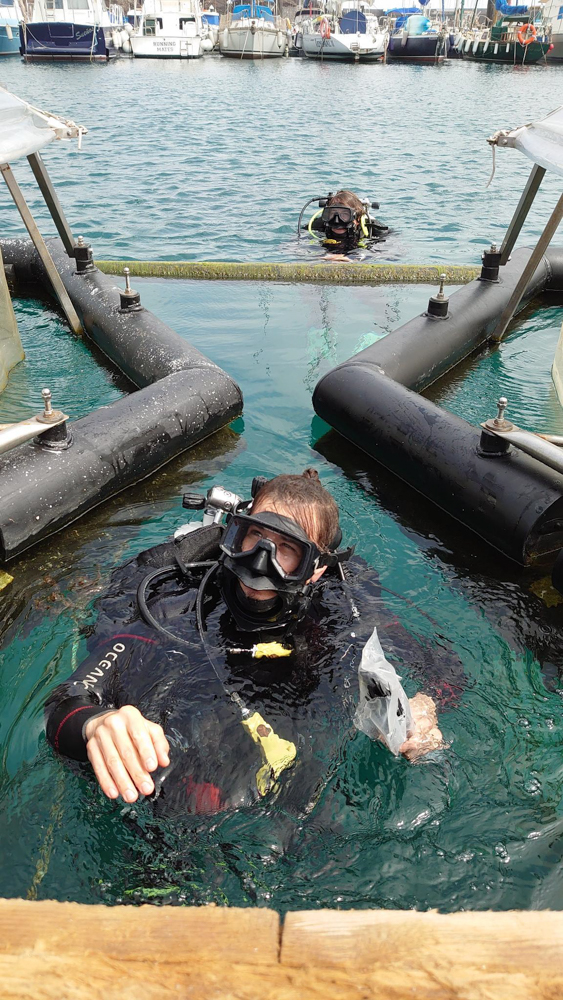
When all of this is set up properly and the mesocosms are filled with the desired water from outside the harbor, little 5 kg weights are attached to the tip of the sediment traps, the lowest part of the mesocosms funnel. This is to keep the sediment traps straight and allow for efficient collection of sinking particles. With this, after 3-4 intensive days, (most) dive work is done and the actual experiment can start.
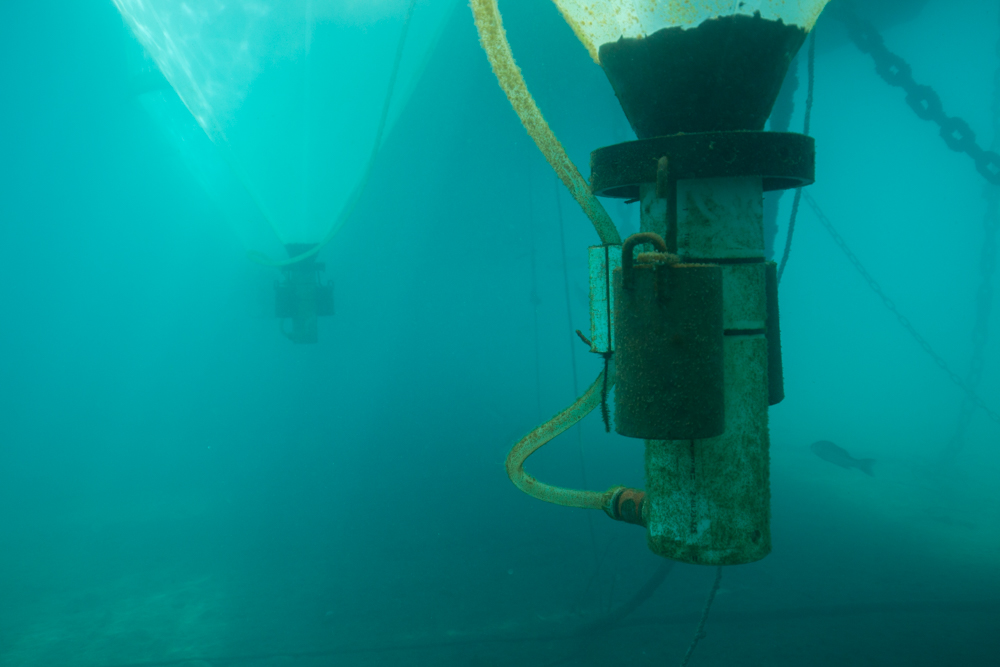
Author: Michael Sswat
